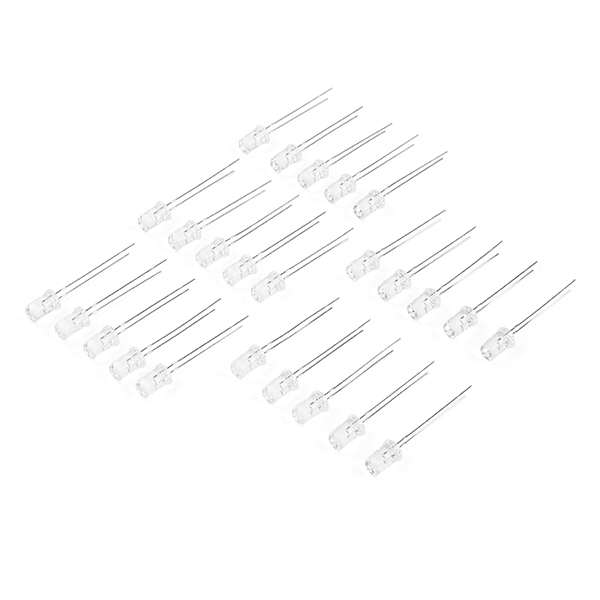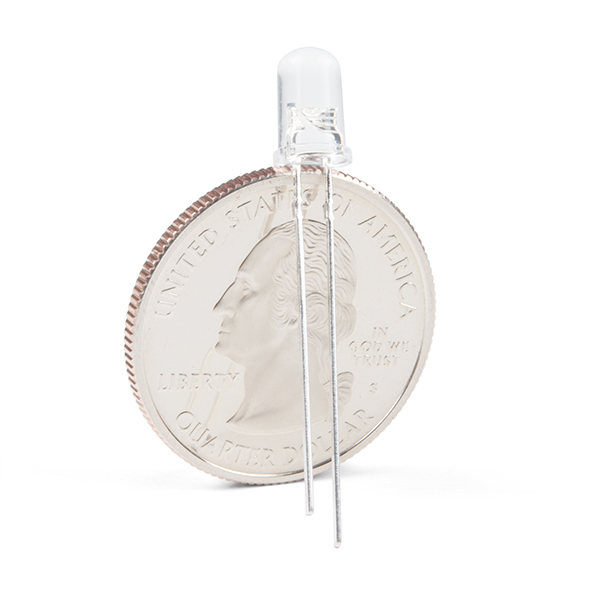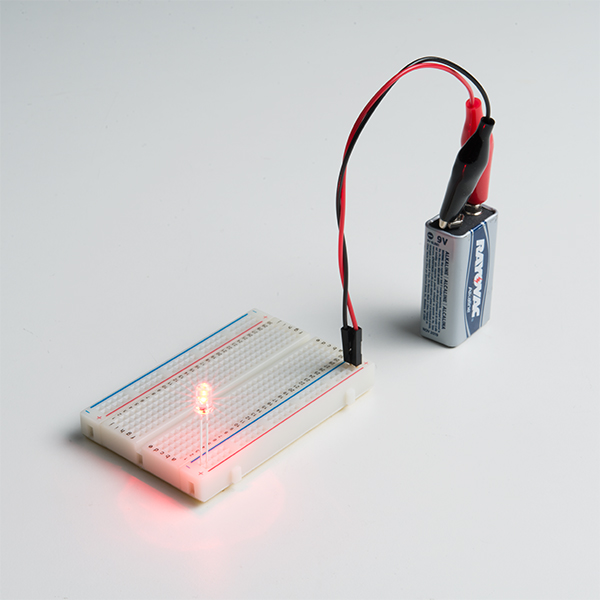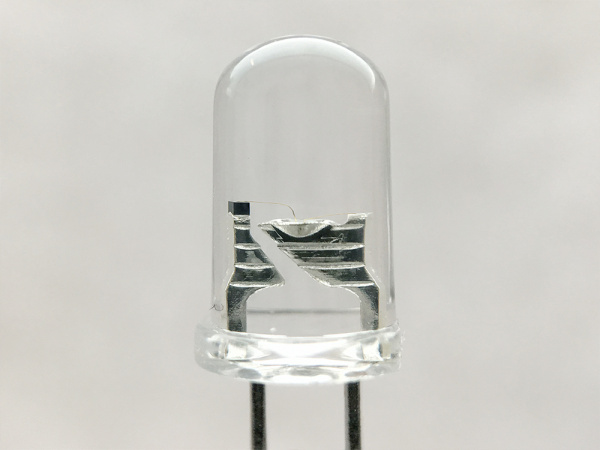LED - Red with Resistor 5mm (25 pack)
You don't have to worry about adding a resistor to an LED if you get an LED with a built in resistor! This pack of 25 red 5mm LEDs will help alleviate any frustrations you've had with accidentally burning them out by having a resistor in the diode itself. Each LED has an operating voltage range of 2.0V to 5V to help make your next project shine!
Each pack of these LEDs are conveniently bagged in reusable ESD safe packaging to make sure nothing accidentally gets damaged before you are able to use them.
- 25x Red LED w/ Resistor - 5mm
- Operating Voltage Range: 2.0V-5.0V
- Standard Size - T1 ¾ 5mm
- Brightness: 2000-3000 MCD
- Color: 620-625 NM
LED - Red with Resistor 5mm (25 pack) Product Help and Resources
Light-Emitting Diodes (LEDs)
August 12, 2013
Learn the basics about LEDs as well as some more advanced topics to help you calculate requirements for projects containing many LEDs.
Determining LEDs with Built-In Resistor
If you look closely at the image below, there is a small, black square IC on the post to limit the current on these types of LEDs.
For more information, check out our LED tutorial.
Core Skill: Electrical Prototyping
If it requires power, you need to know how much, what all the pins do, and how to hook it up. You may need to reference datasheets, schematics, and know the ins and outs of electronics.
Skill Level: Rookie - You may be required to know a bit more about the component, such as orientation, or how to hook it up, in addition to power requirements. You will need to understand polarized components.
See all skill levels
Comments
Looking for answers to technical questions?
We welcome your comments and suggestions below. However, if you are looking for solutions to technical questions please see our Technical Assistance page.
Customer Reviews
3.5 out of 5
Based on 2 ratings:
A few faulty bulbs
4 out of the 25 LEDs were duds (incredibly dim to the point where you couldn't tell if they were on), one was yellow and one actually exploded. The images on the product page show an LED running at 9v. I ran them at 3.3v and one completely exploded. Thankfully it was only one of the bulbs but I'm honestly scared to use the rest of these bulbs without an additional resistor. So to summarize, 6 out of the 25 bulbs were not usable for what I had planned. The rest work fine enough, I just hope they don't explode on me.
Makes putting indicator lights on a breadboard so much easier
Even though TTL chips usually have current limiting resistors on their output pins, LEDs going directly to ground can take away too much voltage for that output to be an effective input to another TTL chip. Adding resistors makes that work, but takes up a lot of space on a breadboard.
These LEDs don't take away too much voltage and they don't take away too much space, either!





How about an assortment pack? Ten each of Red, five of Green, five of Blue, and five of Yellow? I can't use 25 of each color, thats 100 LEDS to cover the four colors! Maybe price the assortment at $9.95 to cover the sorting cost?
Strange in the description, you wrote power 2V to 5V, but in the picture, this is connected to a 9V battery !?
The datasheet says something about 5V for the forward voltage. Testing it out @ 5V, it pulls about 18mA. It has been working fine at 9V and pulls about 30mA. This is probably at the higher end of the input voltage. (PS: Any higher, I'd be worried. At about 16V, the LED blew out under our stress tests).
18mA... This is so close to being the perfect "in-breadboard" poor man's logic probe. If it only drew less current!
I currently solder 1K resistors into the legs of LEDs, and a source of pre-made ones would be super helpful. These "probe" LEDs can be scattered throughout a breadboard circuit to debug it, or to just visualize its workings to observers. The 2mA draw makes them essentially transparent to most modern logic components. Any chance you can request your supplier to make low current versions?
2V - 5V is the recommended voltage, but we wanted to show a 9V hooked up to prove that there are resistors inside each LED that will help prevent burnout.
Just want to confirm these are clear but light up red?
You are correct! You can see it lit up in the third image.